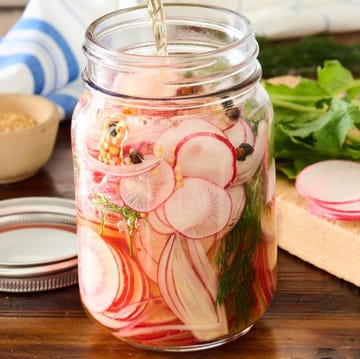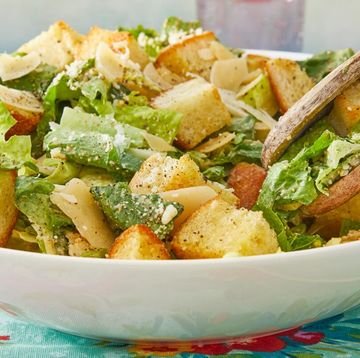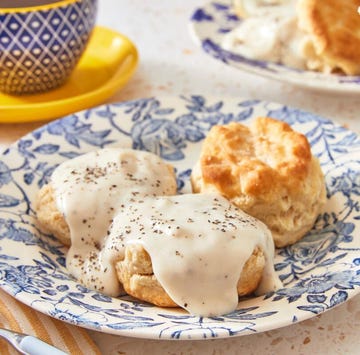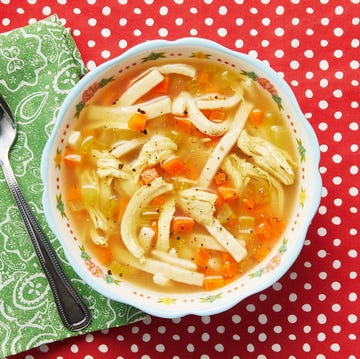
Yields:
2 serving(s)
Prep Time:
30 mins
Total Time:
1 hr
With baking season coming up, I thought I'd let you in on a little secret.
For years, an all-shortening pie crust was what I considered the perfect pie crust. But that's not how I roll these days. Don't get me wrong—all-shortening pie crusts are flaky and extremely delicious. But here's the thing: I love butter. Butter is one of my major food groups. Over time, I started making pie crusts with butter and shortening and never turned back.
So, here I am introducing my new version of the perfect pie crust.
The butter gives the crust such a rich, and, well, buttery flavor. The butter also gives you those wonderful flaky layers that every homemade pie crust should have. Shortening on the other hand, makes the crust exceptionally tender and easy to roll out—even straight from the fridge! The two together are a match made in pie heaven.
Give it a try for your Thanksgiving pies this year and let me know what you think! This crust will work for any pie recipe that calls for an unbaked crust.
What's the trick to making a good pie crust?
The best thing you can do for your pie crust is start with cold butter and shortening. If they're cold, the butter and shortening pieces will stay solid while you mix up the dough. For extra insurance, I pop the dough in the freezer for 30 minutes before rolling it out to help the butter and shortening firm up even more. Then, when you bake the crust, those little bits of fat will melt, creating steam which forms flaky layers. Chilling the dough also allows time for the gluten to relax so it's easier to roll out and is less likely to shrink while it bakes.
How long can you keep unbaked pie crust in the fridge?
The pie dough will stay good for up to two days in the refrigerator. You can also freeze it for up to three months. I love to stash a few rounds of dough in my freezer several weeks or months ahead of Thanksgiving and Christmas. It's a great way to get a head start on holiday baking!
Advertisement - Continue Reading Below
Ingredients
- 3 cups
all-purpose flour, plus more for dusting
- 1 tsp.
kosher salt
- 3/4 cup
cold vegetable shortening, cut into pieces
- 3/4 cup
(1 1/2 sticks) cold salted butter, cut into pieces
- 1
large egg
- 4 Tbsp.
ice water, plus more as needed
- 1 Tbsp.
distilled white vinegar
Directions
- Step 1In a large bowl, mix together the flour and salt. Add the shortening and butter. With a pastry cutter or your fingers, work the shortening and butter into the flour until the mixture resembles coarse crumbs, 3 to 4 minutes.
- Step 2In a small bowl, beat the egg with a fork and pour it into the flour mixture. Add the ice water and vinegar. Stir gently until just combined and the dough holds together when pinched. If the dough does not hold together when pinched, add more water, 1 teaspoon at a time.
- Step 3Divide the dough into 2 equal pieces. Form them into balls, then place each ball in a 1-gallon zip-top plastic bag (do not seal). Using a rolling pin, slightly flatten each ball of dough into a disk (about ½ inch thick) to make rolling easier later. Seal the bags and place them in the freezer until firm, about 30 minutes.
- Step 4When you are ready to use the dough to make a crust, remove from the freezer. On a generously floured surface, roll out the dough with a rolling pin, starting at the center and working your way out. Be gentle and patient; it'll take a little time to get the dough completely rolled out. If the dough sticks to the countertop, use a metal spatula or bench scraper to gently loosen and flip it, adding more flour to the surface and dough as needed. Continue rolling until the dough is approximately 2 inches larger than your pie plate.
- Step 5To transfer the dough, loosen it again with a spatula and lift the pie crust into a 9-inch pie plate (or you can roll the pastry over the rolling pin, lift it onto the pie plate, and unroll it). Lift the edges of the dough gently and allow the dough to settle naturally into the plate, fitting snugly along the bottom and sides without pressing or stretching (to avoid shrinking during baking). Trim any excess dough, leaving an overhang of about 1 inch. Go around the pie plate, pinching and tucking the dough under itself to create a clean edge.
- Step 6If you are making a single-crust pie, crimp or flute the edges as desired, using a fork or your fingers. The crust is now ready to be par-baked or filled, as your recipe specifies. If you are making a double-crust pie, roll out the remaining dough and use it to top your filling.
Tip: Pie dough will keep in a zip-top plastic bag in the refrigerator for up to 2 days or in the freezer for up to 3 months. If the dough is frozen for less than 1 hour, it can be rolled out immediately. If it is frozen for 4 hours, let it rest at room temperature for 15 minutes before rolling. Dough that has been frozen solid can be thawed in the refrigerator for 4 hours or at room temperature for 1 hour before rolling.
Advertisement - Continue Reading Below

Does Honey Expire?

Quick and Easy Pickled Radishes

This Pesto Recipe Is Bright, Bold, and Beyond Easy

Make The Best Caesar Salad For Dinner Tonight
Advertisement - Continue Reading Below
Advertisement - Continue Reading Below








